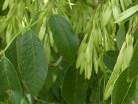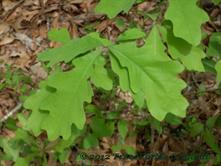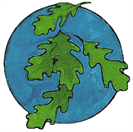



Home>Browse by State>Illinois
The Prairie State, 'State sovereignty, national union'
State Tree: White Oak

Want to add your tree to our picture gallery? Click here for details!
-Color denotes a tree that is rare or endangered

Illinois


™

Friday, May 30, 2025
|
|
|
|
|
| A-Z scientific | ||
| A-Z by Common Name | ||
| Families | ||
| Browse by State | ||
| Rare or Endangered Species | ||
| Trees_with_Special_Uses | ||
| Tallest and Biggest |
| Aceraceae Maple Family | ||
| Anacardiaceae Sumac Family | ||
| Annonaceae Custard Apple Family | ||
| Aquifoliaceae Holly Family | ||
| Arecaceae, Palm Family | ||
| Betulaceae Birch family | ||
| Bignoniaceae Trumpet Creeper Family | ||
| Burseraceae Frankincense Family | ||
| Caprifoliaceae Honeysuckle Family | ||
| Chrysobalanaceae Coco-plum Family | ||
| Cornaceae Dogwood Family | ||
| Cupressaceae Cypress Family | ||
| Cyrillaceae Cyrilla Family | ||
| Ebenaceae Ebony Family | ||
| Ericaceae Heath Family | ||
| Fabaceae Pea Family | ||
| Fagaceae Beech Family | ||
| Hamamelidaceae Witch Hazel Ffamily | ||
| Hippocastanaceae Horse Chestnut Family | ||
| Juglandaceae Walnut Family | ||
| Lauraceae Laurel Family | ||
| Leitneriaceae Corkwood Family | ||
| Magnoliaceae Magnolia Family | ||
| Meliaceae Mahogany Family | ||
| Moraceae Mulberry Family | ||
| Myricaceae Bayberry Family | ||
| Myrsinaceae Myrsine Family | ||
| Myrtaceae Myrtle Family | ||
| Nyctaginaceae Four Oclock Family | ||
| Olacaceae Olax Family | ||
| Oleaceae Olive Family | ||
| Pinaceae Pine Family | ||
| Platanaceae Plane Tree Family | ||
| Polygonaceae Buckwheat Family | ||
| Rhamnaceae Buckthorn Family | ||
| Rosaceae Rose Family | ||
| Rubiaceae Madder Family | ||
| Rutaceae Rue Family | ||
| Salicaceae Willow Family | ||
| Sapindaceae Soapberry Family | ||
| Sapotaceae Sapodilla Family | ||
| Simaroubaceae Quassia Family | ||
| Styracaceae Storax Family | ||
| Symplocaceae Sweetleaf Family | ||
| Theaceae Tea Family | ||
| Tiliaceae Lindon Family | ||
| Ulmaceae Elm Family | ||
| Taxaceae Yew Family | ||
| Yucca Family |
| Maple A-Z |
| sumac_family_a-z |
| custard_apple_family_a-z |
| holly_trees_a-z |
| palm_family_a-z |
| birch_family_a-z |
| trumpet_creeper_family_a-z |
| honeysuckle_family_a-z |
| dogwood_family_a-z |
| cypress_family_a-z |
| heath_family_a-z |
| pea_family_a-z |
| beech_family_a-z |
| walnut_family_a-z |
| magnolia_family_a-z |
| olive_family_a-z |
| rose_family_a-z |
| willow_family_a-z |
| franklinia |
| elm_family_a-z |
| Federal List | ||
| State Lists | ||
| Invasive_species |
| Restoration of the American Chestnut | ||
| Restoration of the American Elm | ||
| Sustainable Forestry |
| Contact Us | ||
| Our Contributors | ||
| Photo of the Month | ||
| Usage Requirements | ||
| FAQ | ||
| Report a Broken Link |
| photo_submission |
| Photo Store |

We are part of the Hubpages community.
Click here for more info.
Click here for more info.

Custom Search
Native Trees of Illinois
While only 19% of Illinois' original forests
remain, the state's 142 state parks and natural areas
and 2 national forests preserve a wide variety of Illinois'
ecosystems and tree species. From oak-hickory
forests, preserved prairie lands, ravines, baldcypress
and tupelo filled swamps, bluffs and rare hill country,
Illinois offers just about any outdoor activity a nature
lover can long for. Trails, hiking, rock climbing, caving,
birding, fishing, hunting and even scuba diving are all
within a day's reach for the explorer or for those
seeking a weekend getaway.
Southern Illinois is home to swamps and waterways with over 100 species of birds and
some of the largest and oldest baldcypress trees in the state- including the state champion in
Cache River State Natural Area. Leaving the swamp, you can meander on the trails through
hardwood forests comprised of overcup oak, pin oak, cherrybark oak and sweetgum. The
southern region of Illinois also has the most rugged terrain in the state, which can be explored
in the Trail of Tears State Forest. Here in the Ozark hills, the forests are diverse and ruled by
the terrain. Varying from southern and northern slopes, to stream valleys and dry ridges,
trees like American beech, American elm, sycamore, tuliptree, sugar maple, red oak,
sweetgum, pawpaw, buckeyes, holly and spicebush, may be found in this collage of habitats.
For the fisherman and hunter, Illinois has many popular fishing lakes and a least a dozen
state areas set aside for hunting deer, wild turkey, pheasant, quail, and even pigeon. Argyle


White Oak is one of twenty oak tree species native to Illinois. In fact, from 1907 to 1973, this was reflected by of the state tree simply being 'native oak'. The state tree was decided in 1907 by a vote of school children and in that tradition, another vote was held in 1973, effectively changing the state symbol to Quercus alba, White Oak.
White Oak is found in all 102 counties of Illinois but Putnam County holds the State Champion. It measures 65 feet tall, has a 105 foot crown spread, and is a whopping 7 feet in diameter at breast height! While white oak trees can grow
White Oak is found in all 102 counties of Illinois but Putnam County holds the State Champion. It measures 65 feet tall, has a 105 foot crown spread, and is a whopping 7 feet in diameter at breast height! While white oak trees can grow
up to 100 feet tall, they typically only reach about 4 feet in diameter. The leaves are yellowish
green on top and lighter on the underside. They are simple, alternate, 4 to 6 inches long and
lobed. Popular as an amenity tree for their shade, purplish fall foliage, and desirable crown
shape, white oak trees are suitable for a variety of soil types and are somewhat drought
Illinois Tree Facts

Forested acres: 4.4 million
Percent of total area forested: 12%
Predominant forest type: Oak-Hickory
Most common tree species: Slippery Elm
Number of National Forests: 2
Number of State Parks/Natural Areas: 142
Number of Tree city USA communities: 184
Number of invasive tree species: 26 (see state list for noxious/invasive plants)
Insects of Concern: Emerald Ash Borer, Asian Longhorned Beetle
Pathogen of Concern: Sudden Oak Death
Number of tree families in our collection: 29
Number of endangered or threatened species in our collection: 18
Sources:
Arborday.org
US Forest Service
University of Illinois Extension, Big Tree Register
United States Department Of Agriculture, Natural Resources Conservation Services: PLANTS Database
Additional state resources:
University of Illinois Extension
Illinois Department of Natural Resources, State Park and Natural Areas
Illinois Department of Natural Resources: Division of Forest Resources (DNR)
Percent of total area forested: 12%
Predominant forest type: Oak-Hickory
Most common tree species: Slippery Elm
Number of National Forests: 2
Number of State Parks/Natural Areas: 142
Number of Tree city USA communities: 184
Number of invasive tree species: 26 (see state list for noxious/invasive plants)
Insects of Concern: Emerald Ash Borer, Asian Longhorned Beetle
Pathogen of Concern: Sudden Oak Death
Number of tree families in our collection: 29
Number of endangered or threatened species in our collection: 18
Sources:
Arborday.org
US Forest Service
University of Illinois Extension, Big Tree Register
United States Department Of Agriculture, Natural Resources Conservation Services: PLANTS Database
Additional state resources:
University of Illinois Extension
Illinois Department of Natural Resources, State Park and Natural Areas
Illinois Department of Natural Resources: Division of Forest Resources (DNR)
Follow the links to view species native to Illinois. If the genus is not linked, species are listed on the family page.
Aceraceae, Maple
Anacardiaceae, Sumac
Rhus, Sumac
Annonaceae, Custard-apple
Aquifoliaceae, Holly
Ilex, Holly
Betulaceae, Birch
Betula, Birch
Carpinus, Hornbeam
Corylus, Hazelnut
Ostrya, Hophornbeam
Bignoniaceae, Trumpet Creeper
Caprifoliaceae, Honeysuckle
Cornaceae, Dogwood
Cornus, Dogwood
Nyssa, Tupelo
Cupressaceae- Cypress
Juniperus, Juniper
Taxodium, Baldcypress
Thuja, Arborvitae
Aceraceae, Maple
Anacardiaceae, Sumac
Rhus, Sumac
Annonaceae, Custard-apple
Aquifoliaceae, Holly
Ilex, Holly
Betulaceae, Birch
Betula, Birch
Carpinus, Hornbeam
Corylus, Hazelnut
Ostrya, Hophornbeam
Bignoniaceae, Trumpet Creeper
Caprifoliaceae, Honeysuckle
Cornaceae, Dogwood
Cornus, Dogwood
Nyssa, Tupelo
Cupressaceae- Cypress
Juniperus, Juniper
Taxodium, Baldcypress
Thuja, Arborvitae
Illinois Tree Families and Genera

click to enlarge.
Useful information while browsing species:
• How to read a botanical name
• How to use our species boxes:
• How to read a botanical name
• How to use our species boxes:
-Color denotes a tree that is rare or endangered
Please note: This is not a complete list of all native tree families and species found in Illinois. We are constantly working towards a more comprehensive list and will add families and their species as completed.
Additional Resources:
North American Native Tree Families
North American A to Z List by Scientific Name
North American A to Z List by Common Name
North American Native Tree Families
North American A to Z List by Scientific Name
North American A to Z List by Common Name
Ebenaceae, Ebony
Diospyros, Persimmon
Ericaceae, Heath
Fabaceae, Pea
Fagaceae, Beech
Quercus, Oak
Hamamelidaceae, Witch-hazel
Hippocastanaceae, Horse-chestnut
Juglandaceae, Walnut
Carya, Hickory
Juglans, Walnut
Lauraceae, Laurel
Magnoliaceae, Magnolia
Moraceae, Mulberry
Oleaceae, Olive
Fraxinus, Ash
Pinaceae, Pine
Pinus, Pine
Diospyros, Persimmon
Ericaceae, Heath
Fabaceae, Pea
Fagaceae, Beech
Quercus, Oak
Hamamelidaceae, Witch-hazel
Hippocastanaceae, Horse-chestnut
Juglandaceae, Walnut
Carya, Hickory
Juglans, Walnut
Lauraceae, Laurel
Magnoliaceae, Magnolia
Moraceae, Mulberry
Oleaceae, Olive
Fraxinus, Ash
Pinaceae, Pine
Pinus, Pine
Platanaceae, Plane-tree
Platanus, Sycamore
Rhamnaceae, Buckthorn
Rosaceae, Rose
Crataegus, Hawthorn
Prunus, Plum/Cherry
Rubiaceae, Madder
Rutaceae, Rue
Salicaceae, Willow
Populus, Cottonwood
Salix, Willow
Sapotaceae, Sapodilla
Styracaceae, Storax
Tiliaceae, Lindon
Tilia, Basswood
Ulmaceae, Elm
Celtis, Hackberry
Ulmus, Elm
Platanus, Sycamore
Rhamnaceae, Buckthorn
Rosaceae, Rose
Crataegus, Hawthorn
Prunus, Plum/Cherry
Rubiaceae, Madder
Rutaceae, Rue
Salicaceae, Willow
Populus, Cottonwood
Salix, Willow
Sapotaceae, Sapodilla
Styracaceae, Storax
Tiliaceae, Lindon
Tilia, Basswood
Ulmaceae, Elm
Celtis, Hackberry
Ulmus, Elm
Illinois Endangered or Threatened Tree Species

This is not a comprehensive list but we are always working on adding more and will update accordingly.
Threatened:
Juniperus communis- Common juniper
Larix laricina, Tamarack
Planera aquatica, Planertree
Quercus phellos, Willow oak
Quercus prinus, Chestnut oak
Styrax americanus, American snowbell
Thuja occidentalis, Arborvitae
Endangered:
Alnus incana ssp. rugosa- Speckled alder
Amelanchier interior- Pacific serviceberry
Amelanchier sanguinea- Roundleaf serviceberry
Betula alleghaniensis- Yellow birch
Betula populifolia- Gray birch
Carya pallida- Sand hickory
Cladrastis kentukea- Kentucky yellowwood
Corylus cornuta var. cornuta- Beaked hazelnut
Halesia carolina- Carolina silverbell
Malus angustifolia- Southern crab apple
Pinus banksiana- Jack pine
Threatened:
Juniperus communis- Common juniper
Larix laricina, Tamarack
Planera aquatica, Planertree
Quercus phellos, Willow oak
Quercus prinus, Chestnut oak
Styrax americanus, American snowbell
Thuja occidentalis, Arborvitae
Endangered:
Alnus incana ssp. rugosa- Speckled alder
Amelanchier interior- Pacific serviceberry
Amelanchier sanguinea- Roundleaf serviceberry
Betula alleghaniensis- Yellow birch
Betula populifolia- Gray birch
Carya pallida- Sand hickory
Cladrastis kentukea- Kentucky yellowwood
Corylus cornuta var. cornuta- Beaked hazelnut
Halesia carolina- Carolina silverbell
Malus angustifolia- Southern crab apple
Pinus banksiana- Jack pine
Looking for a nursery near you?
Check out our nursery listing by county below!
Sorry, we do not currently have any tree nursery listings for this state. We do update these lists, so please check back.
Check out our nursery listing by county below!
Sorry, we do not currently have any tree nursery listings for this state. We do update these lists, so please check back.



Pinus echinata- Shortleaf pine
Pinus resinosa- Red pine
Populus balsamifera- Balsam poplar
Quercus texana, Texas red oak
Salix serissima- Autumn willow
Sambucus racemosa var. racemosa- Red elderberry
Sideroxylon lanuginosum ssp. lanuginosum- Gum bully
Sorbus americana- American mountain ash
Styrax grandifolius- Bigleaf snowbell
Tilia americana var. heterophylla- American basswood
Ulmus thomasii- Rock elm
Pinus resinosa- Red pine
Populus balsamifera- Balsam poplar
Quercus texana, Texas red oak
Salix serissima- Autumn willow
Sambucus racemosa var. racemosa- Red elderberry
Sideroxylon lanuginosum ssp. lanuginosum- Gum bully
Sorbus americana- American mountain ash
Styrax grandifolius- Bigleaf snowbell
Tilia americana var. heterophylla- American basswood
Ulmus thomasii- Rock elm





Lake state park is a well known fishing area with a wide variety of species and in the winter,
the avid fisherman can even go ice fishing on Milliken lake.
Adventurers to western Illinois may want to check out one of the more than 100 caves in the area and will be treated to forests of oak, walnut, sycamore, ash, hackberry, hickory and sycamore along the way. In the Edward R. Madigan State Fish & Wildlife Area, you many even stumble across the largest sycamore tree in Illinois.
Throughout the rest of the state, hikers are able to enjoy not only the hundreds of miles of park trails but also the Grand Illinois Trail, which is the longest continuous trail in the state, stretching 500 miles between Lake Michigan and the Mississippi River. There is also the 61.5 mile long Illinois and Michigan Canal State Trail that follows the the old towpath at Rockdale to LaSalle and treats its visitors with scenic views of the Des Plaines and Illinois rivers.
One of the few remaining virgin forests may be found in Beall Woods State Park. Here you can see the woods as they would have been when the first settlers arrived and walk amidst 120 foot tall trees. The largest stand of tall grass prairie remaining in Illinois may be found preserved in the northeastern region in the Goose Lake Prairie state park. Northern Illinois also holds the oldest rock formations found anywhere in the state. Found in the Franklin Creek area, the exposed gorge bottom dates back more than 500 million years ago. Visitors to this area can explore the rocky environment and walk along the creek bed through silver maples, hackberrys, slippery elm and Canada yew trees. Limestone bluffs, ravines and springs are signatures of the hilly northwest, which was once covered by the sea.
In addition to the flora of Illinois, those interested in the fauna can see over 50 native animal species, as well as 100 non-native, including bison, wolves, black bear, elk and cougar at the Wildlife Prairie State Park. One of the nicest surprises nature lovers will find out about when exploring Illinois, other than the wide variety of activities and ecosystems, is that with the exception of the beaches and the Wildlife Prairie State Park, all the State Parks, State Forests, and State Natural Areas are free to visit!
the avid fisherman can even go ice fishing on Milliken lake.
Adventurers to western Illinois may want to check out one of the more than 100 caves in the area and will be treated to forests of oak, walnut, sycamore, ash, hackberry, hickory and sycamore along the way. In the Edward R. Madigan State Fish & Wildlife Area, you many even stumble across the largest sycamore tree in Illinois.
Throughout the rest of the state, hikers are able to enjoy not only the hundreds of miles of park trails but also the Grand Illinois Trail, which is the longest continuous trail in the state, stretching 500 miles between Lake Michigan and the Mississippi River. There is also the 61.5 mile long Illinois and Michigan Canal State Trail that follows the the old towpath at Rockdale to LaSalle and treats its visitors with scenic views of the Des Plaines and Illinois rivers.
One of the few remaining virgin forests may be found in Beall Woods State Park. Here you can see the woods as they would have been when the first settlers arrived and walk amidst 120 foot tall trees. The largest stand of tall grass prairie remaining in Illinois may be found preserved in the northeastern region in the Goose Lake Prairie state park. Northern Illinois also holds the oldest rock formations found anywhere in the state. Found in the Franklin Creek area, the exposed gorge bottom dates back more than 500 million years ago. Visitors to this area can explore the rocky environment and walk along the creek bed through silver maples, hackberrys, slippery elm and Canada yew trees. Limestone bluffs, ravines and springs are signatures of the hilly northwest, which was once covered by the sea.
In addition to the flora of Illinois, those interested in the fauna can see over 50 native animal species, as well as 100 non-native, including bison, wolves, black bear, elk and cougar at the Wildlife Prairie State Park. One of the nicest surprises nature lovers will find out about when exploring Illinois, other than the wide variety of activities and ecosystems, is that with the exception of the beaches and the Wildlife Prairie State Park, all the State Parks, State Forests, and State Natural Areas are free to visit!


White Oak, Quercus alba, dry leaf and bark
©2012 TreesForMe Original Image. See usage requirements.
White Oak, Quercus alba
©2012 TreesForMe Original Image. See usage requirements.

tolerant. They will do best in sites with moist, deep
well draining soil but are difficult to transplant due to
their taproot. White oak is sensitive to flooding and
does not tolerate water logged soils. White oak trees
Have high genetic variation and will hybridize with other members in the oak genus, Quercus.
The hard, heavy and strong wood has made this tree species the most important timber
species in the southeastern part of its range. It glues and takes a finish well and is used to
make furniture, veneer, flooring, railroad ties and even caskets. There is also a high demand for
its use in whiskey barrels. White oak wood is also valued as fire wood.
The acorns are eaten by a wide variety of wildlife such as squirrels, chipmunks, wild turkeys
and other birds. Deer will browse on the foliage and the bark and twigs are eaten by porcupines,
beavers and rabbits.

Tree lists:
•A-Z by scientific
name
•A-Z by common
name
•By Family
For state A-Z list click state name below.
•A-Z by scientific
name
•A-Z by common
name
•By Family
For state A-Z list click state name below.



